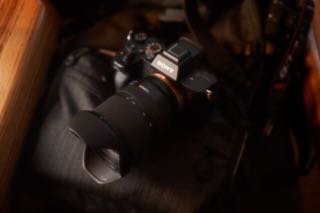For more stories like this, subscribe to The Phoblographer.
From today on, I’m making a strong effort to never buy a plastic housed lens again. There is a huge movement around to move away from plastics. Almost every home electronic has done it. And if not, they’ve found a way to work with recycled plastics. But most of them tend to work with recycled metals instead. As an Editor in Chief, I tend to look at other industries besides cameras. Computers, for example, use a lot more recycled materials. Lots of them have nearly eliminated plastics. So why can’t the photo industry do the same in a brand new camera?
Let’s think about this—a metal lens vs. a plastic lens.
- Which is more likely to last a longer period of time?
- Which is likely to break more often?
- Which is likely to be recycled if it’s ever broken?
The answers lean towards metal. If you look for a vintage camera, there’s a strong chance it’s made of metal, as were lenses. But after the Canon AE1 came around, the industry moved towards plastics that felt like metal. Here’s a quote from an article we wrote a while back:
“The Canon AE-1 was a camera that, contrary to popular belief, wasn’t made of metal. Instead, it had plastic designed to look and feel like metal. The Canon AE-1 introduced the use of plastic molding to make the manufacturing process simpler. What this also did was a guarantee that the cameras could be lighter and less prone to breaking because of the flexible material. Indeed, the Canon AE-1 was rated at 590 grams without a lens. Just think about it: if a lens with a metal exterior took a dent vs a plastic exterior, the plastic would crack and be replaced–but the metal would need to be melted and fixed.”
“To that end though, the AE-1 still doesn’t feel like a cheaply made camera–and that was the object o much debate during it development. Back then, the sales department for Canon was vehemently against the introduction of plastic because they were afraid it would look cheap. So instead what happened was they tried to give the plastic a very metallic feel to it. This satisfied sales well enough.”
Indeed, plastics are still the mainstay. They’re given a ton of different names too. Sometimes it’s carbon thermal composite. Sometimes it’s something else. But at the root of it all, it’s all plastic.
There are a few companies that have really changed my mind about this:
- Tamron: their DSLR lenses are made of metal for the most part, but their FE lenses are all plastic.
- Leica: their lenses are all metal. Even the Sigma 24-70mm f2.8 that they redid was made of metal and minimally larger and heavier. They did it right, and that’s worth a study and conversation in itself.
- Zeiss: their lenses, for the most part, have been made of metal for years. The longevity is quite telling.
- Fujifilm: some of their lenses are made from metal except for the XC.
- Voigtlander: all metal.
- Olympus: some of their lenses are made from metal.
- Panasonic: a few of their lenses are made from metal.
- Sony: some metal in some lenses
In our findings, Canon (with the possible exception of their telephotos), Sigma, and Nikon (except some of the F Mount stuff) don’t really make metal lenses. Trust me: we’ve reviewed more lenses than anyone else in a real-world setting. In a camera though? How cool would it be for a camera to go back to being made of brass?
With all this said, I think it’s very much about time that the photo industry moved back to metal. And I think this should foster a more important and bigger discussion.
Editor’s Note: Tamron and Leica are both current advertising partners. Their ad dollars have no control over this article and my thoughts. It’s something I’ve thought about more over the years.


